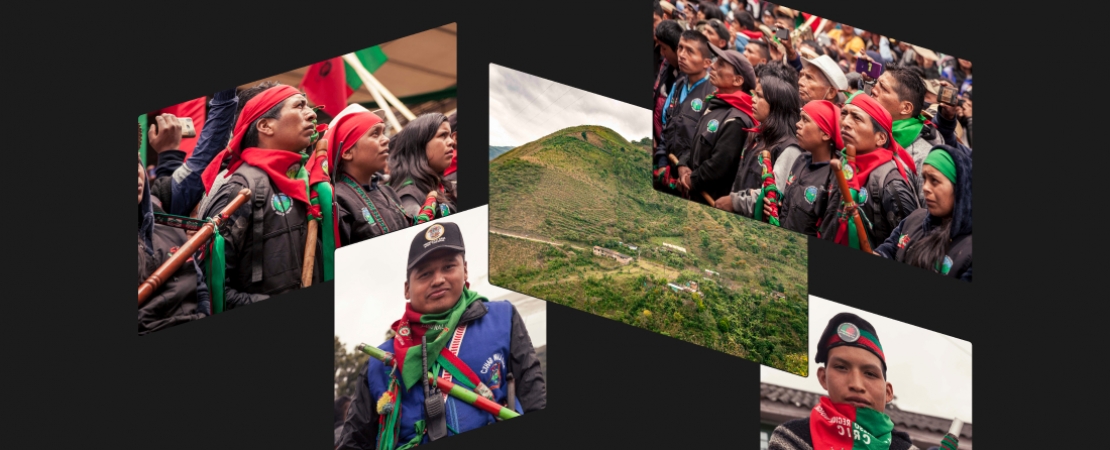
Abiayala is the word various indigenous Colombian peoples use to refer to America. In the Guna language, Abiayala translates as ‘bleeding land’. For the 100-plus autochthonous peoples living in Colombia today, inhabiting the American continent means surviving the wounds: once those of the Spanish conquest, today those inflicted by the violence of the narcotraffickers, the parastatal military apparatuses, and the large oil and gold multinationals.
Nowadays, Colombian indigenous communities constitute a conglomerate of 115 ethnic groups, whose age-old traditions are struggling to adapt to contemporary urgencies. In 2009, the Constitutional Court of Colombia denounced the fact that the armed conflict is endangering the survival of more than 30 autochthonous ethnic groups. Their ancestral territories have been transformed into military camps or fields for the extensive production of coca, opium poppy and marihuana.
In November 2016, peace agreements between the Colombian government and the communist guerrilla group named FARC (Revolutionary Armed Forces of Colombia) were ratified. However, they have not improved conditions in rural areas with an indigenous majority. In regions such as Cauca, Chocó and Nariño, armed dissident groups and paramilitary organisations are rampant They control the country's peripheral territories through systematic violence against any dissident voices.
It is no coincidence that, since the agreements were signed, Colombia has become the country with the highest number of murders of human rights defenders in the world: at the end of 2020, the count had exceeded one thousand victims in four years.
Nearly three hundred of the victims were indigenous activists. They belonged to autochthonous communities that for decades have been involved in a war in which they play no role, except for that of targets of the crossfire between the state army and guerrilla groups.
Such is the case of the 240,000 people who make up the Nasa population in the heart of the Colombian Andes. For some years now, the Nasa have been applying an organised strategy to defend their land from violent invasion by drug traffickers, armed groups and multinational sugar cane companies. However, while in some areas the Nasa community is succeeding in the delicate task of preventing any outside interference in their territories, in other areas the population is succumbing to the armed invasions of the narco-traffickers.